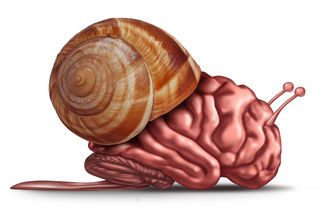Relationships
Valentine’s Day, Love, and the Broken Soul
Savoring life one sip at a time
Posted February 11, 2016

On Valentine’s Day, my dad reliably gave my mom a huge, elaborate heart-shaped box of chocolates, whether they were speaking or not.
Their reliable Valentine’s Day tradition was not surprising considering the various reasons the holiday is important in Western culture. Observing holiday traditions is a primary way that humans connect socially and culturally. Valentine’s Day also relies heavily on symbol usage. Symbolic interaction is how humans prefer to roll because superior symbol usage (e.g. written and spoken language) is why we are at the top of the food chain – not the opposable thumb.
Connecting the symbolic and the sensory
In human sexuality, attaching symbolism to an item or event makes the sensory experience more arousing and is called paraphilia – from the Greek for “other” and “love.” Human sexual paraphilias are multifarious and run the gamut from benign and comical to dangerous and sometimes lethal. But they all share one thing – the symbolic heightens the sensory, thereby increasing arousal.
In celebrating Valentine’s Day, we enhance sensory experiences such as smelling roses, eating chocolates, or looking at well-crafted gold trinkets by attaching symbols of love, such as big heart shaped boxes, and cupid with his arrows and lots of red – the color most associated with love, passion, and sex.

Arousal of any sort is in part an emotional response to an environmental cue that the brain begins processing by the hippocampus contrasting it against an internal reference that is guided by its interpretation (perception/perspective) of two realities – intrinsic and consensual. Intrinsic reality is real because it occurs in nature, has membership in the body of valid scientific knowledge and can be duplicated, e.g., gravity, thermodynamics etc. Consensual reality is real because we agree it’s real via mass social subscription e.g., what constitutes “pretty,” “sexy,” or “classy.” What our symbols represent also requires mass social subscription in most cases.
Valentine’s Day is a celebration of “being in love,” and exchanging Valentine gifts symbolizes partnership that will end in marriage and result in progeny. This is very satisfying to the Ventral Tegmental Area (VTA) in the brain because that structure monitors whether we are advancing evolutionary goals by meeting social requirements, like finding a mate, developing friends, etc. We want the VTA to be happy because a happy VTA will take the lid off of the brain’s neurochemical cookie jar and release the happy dance drugs (dopamine etc.). [1-4] However, because the VTA is subcortical structure, it doesn’t think, it only reads physiological cues, so it is easily tricked. This is why having recreational sex feels just as good as sex aimed at mating. [5-7]

The highly adaptable brain will do whatever it needs to do to reconcile our lives with our world to best satisfy subcortical, evolutionary watchdog structures like the VTA because our emotional happiness depends on it. If they are not happy, we aren’t happy because they close the lid on the neurochemical cookie jar. To compensate for this the brain finds other ways to get our happy dance drugs, such as “paging my drug of choice.” Or we create a consensual reality like Valentine’s Day and symbolically interact to replace things that are missing from the intrinsic reality. [8-13]
The intrinsic reality is that we are a deconstructing social species, addicted to technology, and living in a techno world that is far too fast and complex for the biology of our slowly evolving brains. Even if there were such a thing as “true love,” and we were lucky enough to find it – where do we find the app for it?
But here’s the problem. Thirty-four million tons of mine waste occurs creating Valentine’s jewelry. The roses generate 9,000 metric tons of carbon dioxide and shipping them (mostly from South Africa) wastes fossil fuel. And Valentine’s Day has the highest suicide rate of all of the holidays.

Hence, sadly, as I write this, someone is preparing to end his or her life because there’s no one to share Valentine’s gestures with.
In the chance that you might happen upon this first—please, please, don't go. Valentine’s Day is not important – you are. It’s not real – you are. Love, like all things human, occurs in the moment. This moment will pass. Even if you’re happily married, the bottom line is we are born alone, die alone, and regardless of our relationship status, our most terrifying moments are spent alone, save our private demons.
Love is not about celebrating Valentine’s Day. Love is about celebrating yourself enough to present yourself to the world as the gift you are. Valentine’s day is enjoying the roses – love is about appreciating the thorns. Valentine’s Day is about heart-shaped boxes. Love is about box-shaped hearts. So accept the Universe on its own terms and savor your life – one sip at time – be it bitter or sweet. No one can do that for you but you. Remember, a ruby is a jewel, but it’s also a stone, like the rapture of solitude lies within the agony of being alone. So please, stay, and remain fabulous and phenomenal.
Join my email list to receive notifications of new posts
Or visit me at:
UCLA Center for the Neurobiology of Stress
References
1. Bourdy, R. and M. Barrot, A new control center for dopaminergic systems: pulling the VTA by the tail. Trends Neurosci, 2012. 35(11): p. 681-90.
2. Boye, S.M., C. Contant, and P.P. Rompre, Mesencephalic substrate of reward: possible role for lateral pontine tegmental cells. Brain Res, 2002. 949(1-2): p. 188-96.
3. Britt, M.D. and R.A. Wise, Ventral tegmental site of opiate reward: antagonism by a hydrophilic opiate receptor blocker. Brain Res, 1983. 258(1): p. 105-8.
4. Bruhn, C., [The reward system of the brain: the brain loves surprises]. Dtsch Med Wochenschr, 2014. 139(18): p. 928-9.
5. Blum, K., et al., Do dopaminergic gene polymorphisms affect mesolimbic reward activation of music listening response? Therapeutic impact on Reward Deficiency Syndrome (RDS). Med Hypotheses, 2010. 74(3): p. 513-20.
6. Chartoff, E.H., et al., Anatomically dissociable effects of dopamine D1 receptor agonists on reward and relief of withdrawal in morphine-dependent rats. Psychopharmacology (Berl), 2009. 204(2): p. 227-39.
7. Cooper, D.C., et al., A role for the subiculum in the brain motivation/reward circuitry. Behav Brain Res, 2006. 174(2): p. 225-31.
8. Bossert, J.M., et al., A role of ventral tegmental area glutamate in contextual cue-induced relapse to heroin seeking. J Neurosci, 2004. 24(47): p. 10726-30.
9. Bozarth, M.A. and R.A. Wise, Neural substrates of opiate reinforcement. Prog Neuropsychopharmacol Biol Psychiatry, 1983. 7(4-6): p. 569-75.
10. Bunzeck, N., et al., Contextual interaction between novelty and reward processing within the mesolimbic system. Hum Brain Mapp, 2012. 33(6): p. 1309-24.
11. Dodd, G.T., et al., Central functional response to the novel peptide cannabinoid, hemopressin. Neuropharmacology, 2013. 71: p. 27-36.
12. Fisher, H.E., A. Aron, and L.L. Brown, Romantic love: a mammalian brain system for mate choice. Philos Trans R Soc Lond B Biol Sci, 2006. 361(1476): p. 2173-86.
13. Gardner, E.L., Addiction and brain reward and antireward pathways. Adv Psychosom Med, 2011. 30: p. 22-60.




